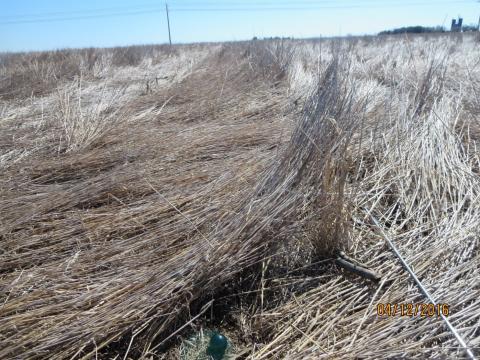The Value of Wheat in a Crop Rotation
August 31, 2016
Wheat is an important part of many crop rotations, adding value directly and often indirectly by aiding in soil water management and weed suppression, reducing erosion, and helping manage pest cycles. Consider wheat's value to your crop production system by looking at what it contributes over multiple years of the rotation.
Post-Harvest Weed Control in Winter Wheat
June 29, 2016
Timely control of weeds following winter wheat harvest can limit soil moisture loss to weeds and prevent the deposit of more weed seeds in the soil, two factors that can benefit the next crop's yield. In addition, timely control of volunteer wheat is essential in reducing the spread of wheat streak mosaic disease. See what influences effectiveness of weed control and how to make your crop more competitive.
Control Volunteer Winter Wheat and Other Weeds Now to Increase and Protect 2017 Yields, Income
June 23, 2016
By far, the greatest risk of losses from mite-vectored viruses occurs when there is a summer "green bridge" of volunteer wheat emerging before harvest. This almost always occurs as a result of wheat seed head shatter from hail storms (Figure 1).
Stripe Rust Widespread in Wheat But Mostly At Low Levels
May 6, 2016
Report of this week's wheat disease survey: On May 3 stripe rust was observed for the first time at the UNL Havelock Farm in Lincoln, where incidence was low and severity ranged from trace to high. t the Agricultural Research and Development Center near Mead on May 3, infections had spread from small hot spots one to two weeks earlier to larger areas in research plots, and leaf damage was apparent Wheat growth stage at these two locations ranged from flag leaf emergence to heading. On May 5, field surveys found stripe rust to be widespread in the west central and southern Panhandle of Nebraska. The flag leaf had not emerged or was just starting to emerge in these parts of the state. Wheat mosaic virus was identified in Deuel County.

Above Average Wheat Yields Expected Across Nebraska
May 5, 2016
Although Nebraska’s planted wheat acres are at record lows, producers should expect high yields. Favorable growing conditions, including a mild winter and abundant precipitation, has Nebraska wheat positioned to achieve wheat yields not seen in the past five years. However, farmers should scout carefully for wheat rust and be prepared to treat any outbreaks in a timely manner.
Wheat Condition and Soil Moisture Reports
April 8, 2016
This week the National Drought Monitor rated almost 25% of Nebraska as "abnormally dry," a major change from 0% since Jan. 1. Most of the affected area was along the southern tier of Nebraska counties.
Freeze Damage to Western Nebraska Wheat Mostly Cosmetic
April 1, 2016






